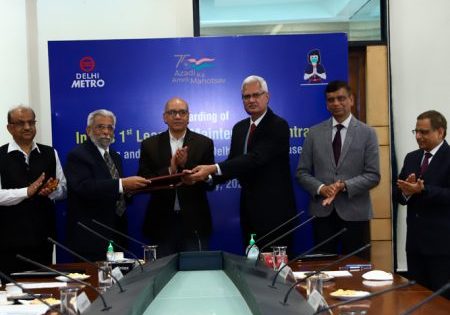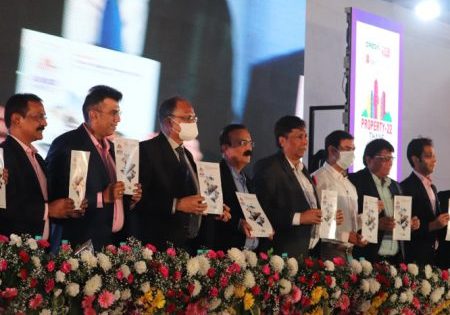In this Readers’ Platform, your author shares observations and experiences.
In the building industry, passenger elevators are the most sold and commonly used piece of vertical-transportation (VT) equipment, and passenger elevators are the most frequently used type of elevator. Buying elevators is challenging, and buyers face dilemmas when making decisions. Not knowing where or how to start, they typically base decisions on price: They want the highest quality at the lowest cost.
The elevator and escalator (E&E) market is very competitive and price-sensitive, with new companies and low-cost alternatives often disrupting existing players’ strategies. Achieving a balance between price and quality is a complex equation. Creating strategies to successfully navigate this complex landscape is an important consideration for VT companies to not only survive, but thrive. Based on my 30 years of VT industry experience, I have observed six features of Indian VT buyers:
- Aspirations to be smart buyers. Indian VT buyers take pride in negotiating hard for the prices they pay. By nature, most Indians are thrifty. Even impulsive Indian buyers want to be smart when buying. They want to be sure that the purchased product or service is of high quality, functional, a good brand and provides a pleasant customer experience. Above all, buyers want to ensure they get the best price.
- Involvement of “influencers.” Multiple “influencers” are involved in buying E&E. Influencers may be the buyer’s industry peers or immediate friends. These people play a major role in guiding decisions. India is a close-knit society, and these influencers shape not only purchase decisions, but also provide a support system. Word-of-mouth, therefore, is the most important influencing aspect, and can also be used as a tool when buying or selling.
- Searching online for alternatives. In the post-pandemic market, technical comparisons turned out to be a major gamechanger. VT buyers discovered that using information available online makes it easier for them to better negotiate on technical specifications, as well as on prices.
- Purchasing as an “experience.” An aspirational VT buyer in India today considers the “experience” when buying any product. Globalization has ensured that even VT buyers from Tier 2 cities expect a high level of customer service, along with competitive pricing.
- An expectation to be showered with options. Every VT buyer is showered with options in terms of both products and prices. Even with such a dense population, consumers are drawn toward exclusivity or customization. They expect a tailor-made, pampering experience.
- Researched and informed decision-making. Buying VT products after acquiring adequate product knowledge is now the norm. Armed with online resources, VT consulting services and validated information, the VT buyer is, time and again, reminded to research and seek validation from VT consultants on every bit of information provided by VT sales professionals. With the internet providing a wealth of information, along with VT consulting services, validating product claims has become almost second nature to all buyers. With almost all information presented in plain, non-technical language, information spans the barriers of education and class.
Eighteen people dealing directly with a VT purchase (excluding government and lowest-price-tender purchases) were interviewed in an unstructured market survey to learn about their price/quality equations for buying E&E. This is what they had to say:
“We are using private-label elevators in our low- to mid-rise projects, and we are fine with product quality. We are getting a good price and very good services.”
“We get high price proposals. When we negotiate, we are offered multiple price reductions. It is difficult for us to have confidence in elevator companies about the ‘right price.’ To conclude a purchase, we need practical and realistic prices.”
“Sales persons educate us on technical specifications, various options and features. We lack confidence to make a decision and acquire suitable elevators for our projects.”
“We attach adequate importance to post-sales service of elevators. Our decisions are based on not only the equipment and its price/quality but also on the service and its cost. An elevator deal is incomplete unless the maintenance terms are fixed and the sales contract includes adequate clauses pertaining to post-sales service and key performance indicators. Our priority is always the cost and our budget.”
“We are a big real estate company and hire professionals to buy our equipment for us. When choosing good, quality passenger elevators, we look at:
- Elevator service life
- Low maintenance cost
- Guaranteed passenger safety
“We prefer long-term contracts and choose the most cost-effective product. To conclude an elevator proposal, we hire VT consultants to provide tender details that include traffic study, layout design, technical specs, proposal evaluations and unbiased input.”
A few VT purchasers expressed dissatisfaction with elevator selling companies. One said:
“We were promised quality products and workability of various features. In the end, the seller was unable to deliver on these promises. We paid a good price, but post-purchase the experience was different. The whole reason we made this deal was to assure quality and service for our premium project buyers.”
Several VT buyers spoke about issues related to delivery times specified in the contract and pricing. Their experience was that the elevator salespeople delayed material deliveries, then charged the buyer unreasonable price increases to cover those delays. One respondent said:
“Many elevators in our old projects are working well, even though they are more than 20 years old. Nowadays, in our new projects where elevators are 3-5 years old, users complain about frequent breakdowns due to low-quality components. This casts us in a bad light. When buying elevators now, our focus is on the defect liability period (DLP), along with price.”
Several VT buyers observed that different brands of passenger elevators have very different prices. Products of big brands come with quality assurance, and these products are also promoted by expensive brand marketing, so prices are higher. One respondent said:
“Here, more than one brand is in the highest quality category. We prefer the most reasonable or low-price brand.”
Analysis of these opinions and views lead your author to two major insights:
- It is important to increase VT buyers’ knowledge of elevators and escalators in terms of price, technical functions, safety features, DLP, reliability and after-sales service. Sharing information about qualities of competing products should be prevalent. Moreover, VT manufacturing companies can collectively promulgate a central lift act for the whole country. Such legislation would mean that all states follow rules to ensure minimum requirements for manufacturing, selling, installing and maintaining VT equipment of uniform quality, manufactured to the highest safety standards.
- VT buyers indirectly indicate that price still is an important indicator of quality. I find that the size of the price-perceived quality relationship varies. The VT seller must be aware that price/quality inferences remain important considerations and keep them in mind when setting price. For example, setting a low selling price based on payback calculations or lowering a price with a discount not only lowers consumer costs, but also threatens to lower their perception of product quality. Therefore, VT companies should be cautious when implementing discounts or pure penetration pricing to induce buyers to try their products or switch to their brands. In these cases, buyers likely make negative price/quality inferences and begin to doubt the quality of the promoted product.
India is a vast geography with a multitude of differences in both demographics and legal requirements. Challenges to market penetration are a signature of the Indian market. This huge and vibrant economy spread over 3.28 million km2 is not homogeneous, and is segmented in a variety of ways. So, segmentation and targeted product pricing plans are the only way out. It is not only state-of-the-art technology that is required to produce, but also an understanding of customers and their needs, while simultaneously paying attention to processes and costs to keep prices low and be competitive. India is an emerging market with a hunger to deliver quality products at competitive prices. An aptitude to excel will be the main driver in this competitive market. A determination to balance the price/quality equation will decide the winners.
Get more of Elevator World. Sign up for our free e-newsletter.






